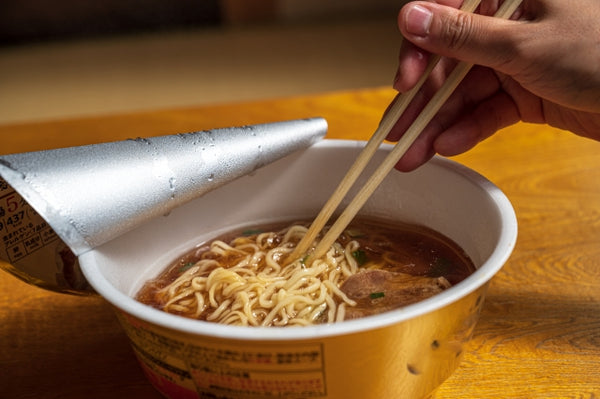The Unexpected Rise of Instant Ramen

When it comes to Japan's profound cultural food influence, there's a single dish that has left a larger impact than even sushi—and it might surprise you!
Available in grocery stores around the world from the largest supermarket chains to the smallest bodegas, instant ramen is everywhere. Costing pennies on the dollar, instant ramen has become a staple of college dorms and affordable eating, but who was the mastermind behind this creation and how did this humble invention reach global saturation?

The creator of instant noodles was a Taiwanese man by the name of Go Pek-Hok, who later became well-known by his Japanese name of Momofuku Ando. Born in 1910, Ando went on to found the Nissin Food Company in 1958, with their flagship product being Chikin Ramen. However, before establishing Nissin, Ando had to develop the method for producing instant noodles. By pioneering a technique that utilized oil for noodle dehydration and combining it with Yoshio Murata's invention of extruded extra curly noodles in 1953, Ando created the iconic blocks of dried noodles we all know and love.
Not content to rest on his laurels, Ando continued to grow and innovate with his creations. In 1971, Ando introduced instant ramen to the United States in foam cups to meet the needs of the American market. He later included freeze-dried vegetables and separate flavor packets to further expand the range of varieties available. Over the years, Ando and Nissin Foods kept pushing boundaries, experimenting with new flavors and even redesigning their iconic cups and introducing instant noodle bowls. Instant noodles have even been adapted to accompany astronauts into space as a meal for the International Space Station!
Instant noodles have become so ingrained in Japanese culture that not one, but two museums dedicated to instant noodles and Momofuku Ando have opened in Japan: one in Osaka in 1999 and another in Yokohama in 2011. Both museums are worth a visit on your next trip to Japan, offering the opportunity to learn about Ando and the history of instant noodles while creating your very own personalized instant noodle creation. If you’d like to try to make chikin ramen from scratch, you can make reservations for sessions several months in advance, but move quick because spots fill up fast! Alternatively, you can craft your own cup noodles with over 5000 different combinations of ingredients! You don’t need a reservation for this activity, and it’s the perfect way to make a delicious souvenir.

Nowadays, there are many different brands, flavors, and styles of instant noodles available, and taking a culinary trip around the world can be as simple as heading to your local grocery store. It is important to reflect on a quote from Ando, which encapsulates one of the core tenets of Nissin foods: “Peace will come to the world when people have enough to eat.” While no doubt a great commercial success, the real value of instant noodles lies in their affordability and ability to provide sustenance to people from all walks of life.
About the author:

Michael Bugajski
Michael is originally from Chicago, IL in the United States, but has lived in Japan for seven years in Niigata and Hokkaido. He is an avid home chef, baker, and coffee enthusiast, but his one true love is ramen. Ever in pursuit of the perfect bowl of noodles, you can always find him by listening for the tell-tale slurp of ramen being enjoyed!




